| |
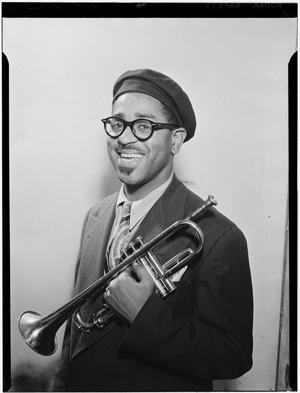
Dizzy Gillespie
William P. Gottlieb/Ira and Leonore S. Gershwin Fund Collection, Music Division, Library of Congress.
|
Eyewear design has always been influenced by popular music and musicians, and that love affair continues to yield fun and exciting results for eyeglass wearers.
Take rock ‘n’ roll, for example. Fans can emulate rockers like Buddy Holly and John Lennon who wore now-iconic frames that evoke not only their music, but an entire era. Brands such as John Varvatos and Chrome Hearts offer rock-inspired looks. And Elton John is synonymous with distinctive, and often outrageously styled glasses, though few can rock his look.
Rappers and their fans also have a passionate relationship with eyewear dating back to the ’80s, when stars like Run DMC were never seen without their trademark Cazals. Today, contemporary chart toppers Common, Drake and Lil Wayne make glasses part of their image, as does Jay-Z, whose Rocawear brand offers a variety of frames.
Stylish specs, particularly sunglasses, have always helped well-dressed jazz musicians and jazz lovers make a fashion statement, although typically in a subtler, cooler way. That aesthetic is on display in a new Fall collection from New York-based independent luxury optician brand Robert Marc NYC. Designed by Jeff Press, creative director for Luxury Optical Holdings, the collection draws inspiration from artists, past and present, in the New York City jazz scene.
As described in Robert Marc NYC’s press release, the glasses pair “unexpected colors and lines, inspired from the beats and pulses of jazz.” The collection features “surprising colors, bold styles and unique combinations for both men and women in optical and sun offerings that are trendy, while still maintaining the understated classic style of eyewear.” Its color palette draws from iconic jazz albums from greats such as Billie Holiday, John Coltrane and Dizzy Gillespie, seen above wearing round black frames in a 1940s portrait by famed jazz photographer William Gottlieb.
The marketing campaign to promote the Robert Marc NYC collection features images of three talented, up and coming jazz musicians on the NYC scene: Julius Rodriguez, Dida Pelled and Jonathan Barber. These artists serve as the models for the collection, wearing the frames in the settings that highlight what New York City and Jazz means to them.
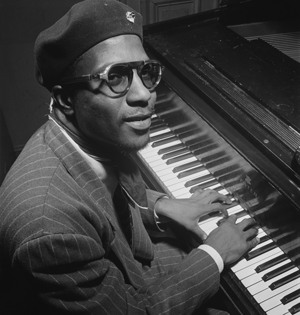
Thelonious Monk
William P. Gottlieb/Ira and Leonore S. Gershwin Fund Collection, Music Division, Library of Congress.
|
Jeff Press’s own connection to jazz started when he was young. “My father was a professional singer, and in the ’50s and ’60s, he toured doing jazz and crooning. I grew up listening to all kinds of classic jazz, especially vocal jazz. Ella Fitzgerald, Sarah Vaughan, Dinah Washington and Joe Williams were always playing in the background,” he told me.
“I’ve always loved the look of jazz, the coolness,” continued Press, who is himself a singer. “That ’50s and ’60s retro styling always feels fresh for the period that it’s in. When we created the collection, we wanted to capture that essence and modernize it."
Press said the collection was inspired by vintage frames, especially ones that used combinations of materials, such as the distinctive pair worn by Thelonious Monk, captured in this William Gottlieb photo taken at Minton’s Playhouse in Harlem in the ’40s. “The fluidity of the frames really ties into the fluidity of the music,” Press noted.
“We used a lot of acetate with titanium combination pieces for our 2010 and 2011 pieces,” he detailed. “Those are fully lined in titanium, and then acetate sandwiches it in the front and back. We wanted to pick up the inspiration from the instruments, that sort of heavy metal feel, how it works beautifully when you look at a drum or a trumpet, to see how the materials work really flawlessly together. We wanted to pick that up in the frame.”
Press said the look of the 2010 and 2011 styles inspired the rest of the collection. “We built out from there to using more titanium and acetate combinations to pure titanium pieces to pure acetate pieces, and a color palette that would really carry through to the entire collection cohesively.”
The iconic musicians Press reveres strongly influenced the type of modern artists he chose for the campaign. “We found some musicians who are unbelievably talented, but also extremely cool looking. That feel that Jonathan and Julius bring, with the hats and the combination frames and that entire ’50s and ’60s feeling and edge, bringing that into the modern time was a beautiful and synergistic thing to do.” | | |
| | 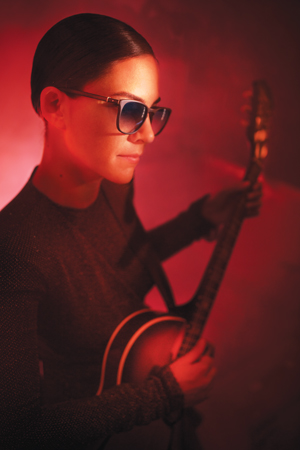
Dida Pelled wearing Robert Marc sunglasses.
Robert Marc NYC |
Julius Rodriguez, a multi-instrumentalist who performs with his own groups and is a member of the jazz influenced pop group Brasstracks, told me he likes the styling of the Robert Marc NYC sunglasses because they give him more of “an elegant, formal vibe” and provide a contrast to “super flashy, bright and neon” sunglasses he usually wears.
He said the retro-modern styling of the collection also resonates with him.
“I’ve spent quite a bit of time listening to and playing older styles, and I
still love it. But as an artist, you’re living in today. it’s not going to be the same as it was 40 or 50 years ago. So you have to find ways to bring the same energy and spirit that was there in the ’50s and ’60s but present it in a way that’s compatible with the way people consume art nowadays. A lot of people, especially in jazz, become purists and get lost doing the same things over and over again. But the people who are really at the forefront, people who understand that times are changing, the way we record music is different, the way we experience music is different, the way people talk, the way people dress, and the music should change with that.
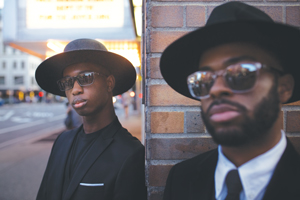
Julius Rodriguez, left, with Jonathan Barber, both dressed in Robert Marc NYC sunglasses.
Robert Marc NYC
|
“Of course, you can’t totally improvise your own thing,” he said. “You have to base it on the history of what came before. But understanding that lineage is the key to be able to create something that is deeply rooted but also current.”
Dida Pelled, a singer and a guitarist who is also featured in the campaign, said she loves Robert Marc NYC’s eyewear and was happy they asked me to “jazz model” for their fall campaign.
Pelled has worn prescription eyewear for much of her life. “My first memories of wearing glasses are with my father when we would be riding in the car together listening to a cassette tape with 'Eye of the Tiger' on repeat, wearing tiger framed sunglasses. He was always bold with dressing up, and it felt playful and fun to see how wearing different things would bring out different parts of myself.
Pelled said that in the last few years, she went back to the idea of trying on new parts of herself. “I used everyday life occurrences to give me new ideas. Trying to avoid a girl I was fighting with had me walking around with big sunglasses and a bucket hat. Playing late night gigs and then having to be up early the next morning, led me to start wearing sunglasses more often. I liked the feeling of that extra layer of protection from the constant stimulus of the outside world. And it was during this time, that I started to get more adventurous with the music I was writing and arranging. I heard a new version of my voice, that at first was raw and vulnerable, and then felt more authentic to me than anything had previously.
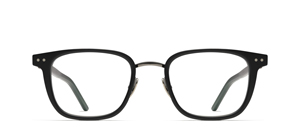
| | 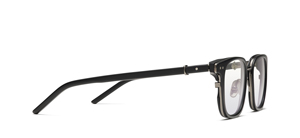
| | 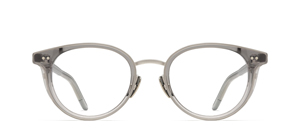
| | 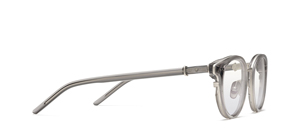
|
Robert Marc NYC’s RM 2010 in Black Satin and RM 2011 in Foggy Day demonstrate the intricate layering of acetate and titanium inspired by iconic jazz styles and instruments, like the frets of a guitar.
|
Asked how eyewear fits into the way she presents herself and her music, Pelled said, “The evolution of personal style and creative style, all started happening together, and I really like how putting all these elements together feels. It is empowering for me to keep changing and challenging what I think I know about myself.”
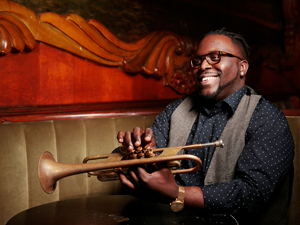
Marquis Hill wearing a State Optical frame.
State Optical Co. |
Other eyewear companies have also used jazz and jazz musicians as a springboard for inspiration. For example, Europa once had a Jazz collection, though it was discontinued a decade ago.
“Although I'd like to consider Europa to be a true pioneer when it comes to the marriage of jazz music and eyewear, unfortunately the days of the Jazz collection are long gone,” said Scott Shapiro, CEO of Europa and State Optical. That said, our first ever "new original" for the State brand was a nod to the Jazz collection.” That frame is worn by Marquis Hill, an accomplished trumpeter who is based in State Optical’s hometown, Chicago. “He has been a partner since the launch, and since then I've never seen a photo of him without State eyewear on,” said Shapiro.
Click here to read Shapiro’s interview with Hill.
The most popular jazz musician to make eyeglasses part of his signature style is undoubtedly Dave Brubeck. As with Buddy Holly, Brubeck’s eyeglasses became an integral part of his image. Throughout his six-decade career, Brubeck was almost always photographed wearing glasses, evolving from a round shape to rectangular. He became so identified with his glasses that a poster celebrating the centennial of his birth next year features only a pair of his trademark specs… without his face.
Brubeck’s connection with eyeglasses doesn’t stop there, though. His 1997 album, In
Their Own Sweet Way features a song he wrote called “Bifocal Blues,” perhaps the only ode to ophthalmic lenses ever recorded. When I first heard it some years ago, I called Brubeck’s management company to inquire about the song and was told it was his comment on aging. You can hear it on
YouTube.
Perhaps the most unusual jazz-optical connection was established by Rudy Van Gelder, the hugely influential recording engineer. Van Gelder, who passed away in 2016 at age 91, recorded some of the greatest jazz sessions in history for Blue Note, Impulse and other labels. According to
Blue Note’s website, he was as vital a part of the “Blue Note Sound” as the incredible musicians he recorded.
| | | | |
| | 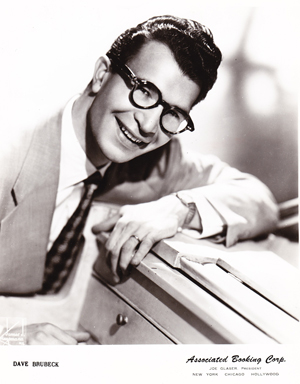
|
| 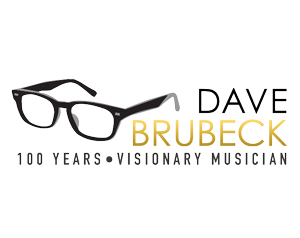
|
| | Dave Brubeck, publicity photo, early 1950s
Courtesy of the Brubeck Family | | Dave Brubeck Centennial Poster
Courtesy of the Brubeck Family
|
As noted on the label’s website, “Rudy first came to the attention of Blue Note founder Alfred Lion in 1952 when Rudy was still a practicing optometrist moonlighting as a recording engineer, and Alfred began using him regularly the next year. Rudy initially recorded sessions on evenings and weekends in his parent’s living room in Hackensack, New Jersey, giving each label a day of the week for their sessions. Later on, in 1959, he closed his optometry practice and built his own studio in Englewood Cliffs, a holy site of jazz music.”
I wonder if Van Gelder, in optometrist mode, asked John Coltrane during the recording of “A Love Supreme,” which was better, take 1 or 2?